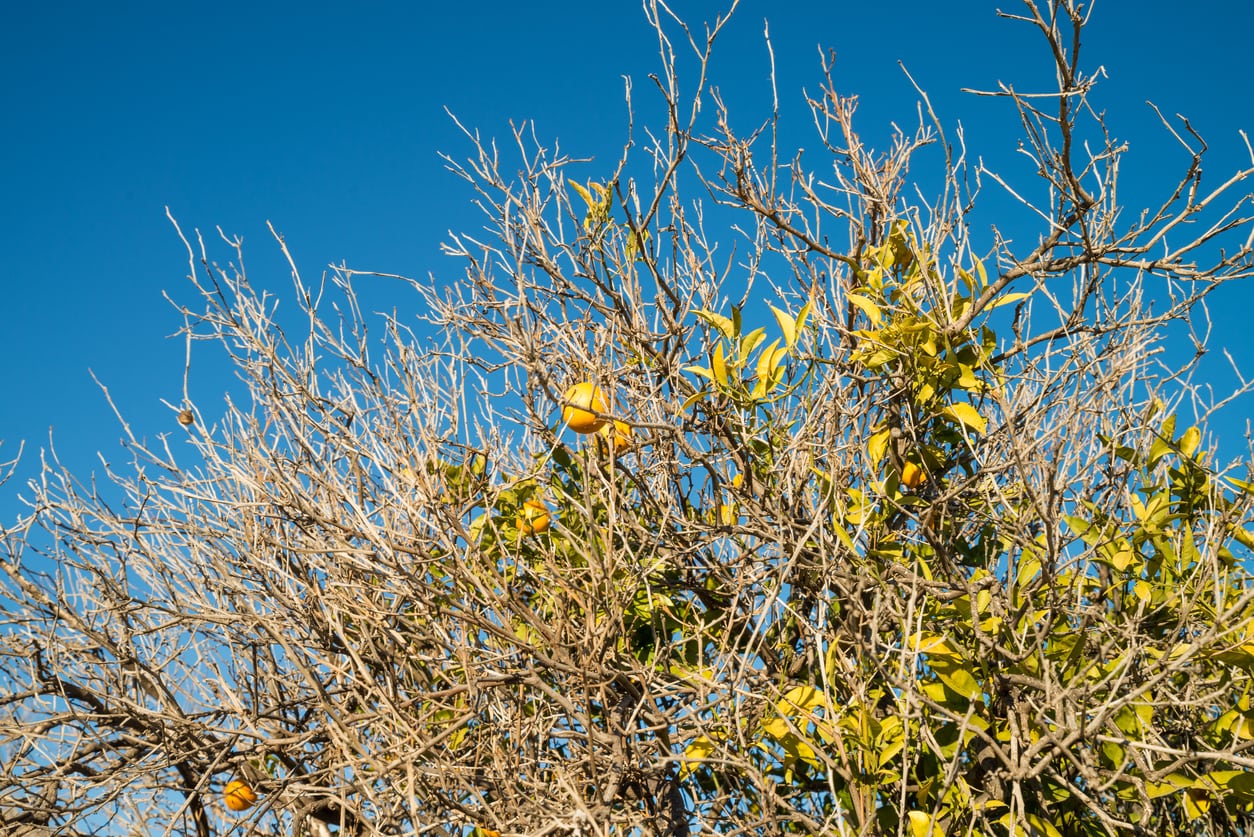My Citrus Stems Are Dying – Reasons For Citrus Limb Dieback


While growing citrus fruits at home is usually a very rewarding activity, things can sometimes go wrong. Like any plant, citrus trees have their own specific diseases, pests and other issues. One increasingly common problem is citrus twig dieback. In this article, we will go over the common reasons why twig dieback of citrus trees may occur.
What Causes Citrus Twig Dieback?
Citrus twig dieback can be caused by common environmental conditions, disease or pests. One simple reason for any citrus dieback, including twig dieback, limb decline, and leaf or fruit drop, is that the plant is stressed from something. This could be a pest infestation, disease outbreak, old age or a sudden environmental change such as drought, flooding, or extensive root or storm damage.
Basically, it is a plant’s natural defense mechanism so that it can survive whatever threat it faces. In old, large citrus trees that have not been properly maintained, it is not uncommon for top branches to shade out lower branches. This can cause lower limbs to experience problems such as citrus limb dieback, leaf drop, etc. Shading out or overcrowding can also create an ideal environment for pests and diseases.
Yearly pruning of citrus trees can help prevent this by opening up the tree’s canopy to let more sunlight in and improve air circulation. Dead, damaged, diseased, crowded or crossing limbs should be pruned out annually to improve citrus health and vigor.
Other Reasons for Branches Dying on Citrus Tree
In the last few years, citrus growers in California have experienced a major outbreak of citrus twig dieback. As consumers, you have probably noticed an increase in the cost of some citrus fruit. This outbreak has severely impacted the yields of citrus growers. Recent studies have concluded that this twig dieback of citrus plants is caused by the disease pathogen Colletotrichum.
Symptoms of this disease include chlorotic or necrotic foliage, thinning of citrus crowns, excessive sap secretion and twig and shoot dieback. In severe cases, large limbs will dieback. Though this is a disease, it is likely spread by insect vectors. Steps being taken to control the disease in citrus orchards include pest control and the use of fungicides.
This disease is still being studied to determine the best control and management options. "The acute toxicity of fungicides to humans is generally considered to be low, but fungicides can be irritating to the skin and eyes. Chronic exposures to lower concentrations of fungicides can cause adverse health effects."
Sign up for the Gardening Know How newsletter today and receive a free copy of our e-book "How to Grow Delicious Tomatoes".
Note: Any recommendations pertaining to the use of chemicals are for informational purposes only. Specific brand names or commercial products or services do not imply endorsement. Chemical control should only be used as a last resort, as organic approaches are safer and more environmentally friendly.

Darcy is a former contributor to Gardening Know How. She is a professional landscape designer and gardening writer with experience in plant sales. An avid gardener, Darcy has a passion for sharing practical tips to help others grow.